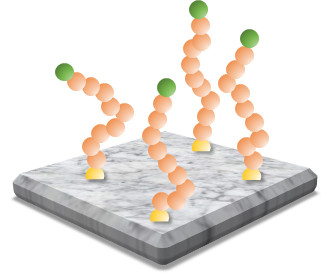Nanofunctional Surfaces for Control of the Biological Interface
Project summary
Biomaterials are defined as nonviable materials used in a medical device or setting intended to interact with biological systems. The key phrase in this definition indicates that biomaterials should be designed to respond to the biological environment. An enormous body of work has been dedicated to controlling the type and extent of the interactions between biomaterials and biology, however, the continuing intense activity in this field indicates that there remain key challenges to be addressed. Some of the most important of these are:
1. Development of highly functional materials to control (augment or prevent) cellular interactions through control of surface chemistry and topography;
2. Improvement of long-term robustness of functional surfaces using durable attachment chemistry;
3. An integrated pathway to adoption of these materials including input from materials scientists, chemists and microbiologists.
It is the aim of this project to tackle all three challenges above, and to demonstrate the pathway from the chemistry laboratory to the clinical setting through a focus on two important applications. The project primarily involves the development of new polymers with controlled and well-understood interactions with cells. In the first sub-project, polymers with strong biocidal activity will be developed. In the second polymers which augment the interactions between biomedical devices and cells, for example in titanium alloy implants, will be prepared and tested. The relationship between surface structure and activity can only be established through a detailed study of the nanostructure of the surface and the cell biology. The project will provide training in advanced polymer synthetic techniques and biomaterials science. The work is highly multidisciplinary and involves collaboration with distinguished colleagues at UQ, QIMR and IHBI.

Research Group
Keywords
Cell & Tissue Engineering, Nanomaterials, Nanobiotechnology, Health

